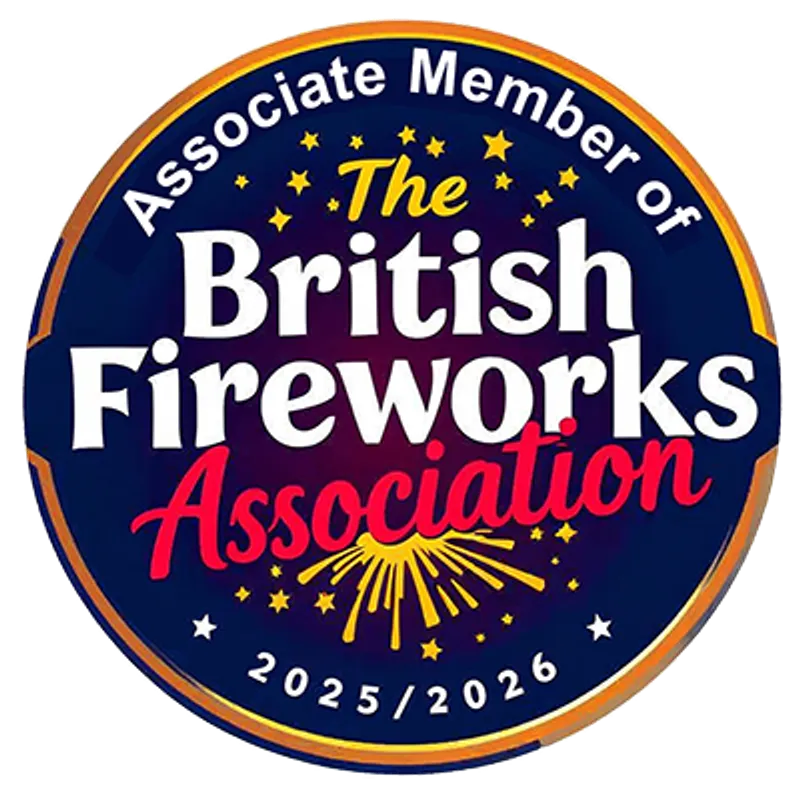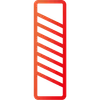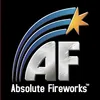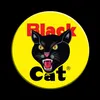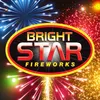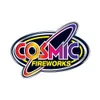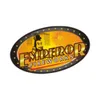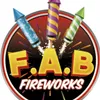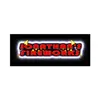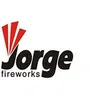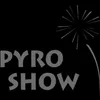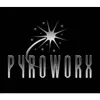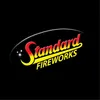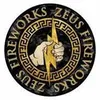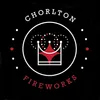How to Use Fireworks Safely at Home
Fireworks are a beloved tradition but also carry risks if not handled properly. With thousands of fireworks injuries every year, using fireworks incorrectly can lead to devastating consequences. This article provides amateur fireworks enthusiasts with expert guidance on organising a dazzling backyard fireworks display safely and legally.
Gain peace of mind by learning how to select suitable consumer-grade fireworks, set up a safe launch area, follow ignition best practices, respond to accidents, and clean up responsibly afterwards. With our comprehensive advice, you can create magical memories with fireworks while prioritizing safety for your family and community.
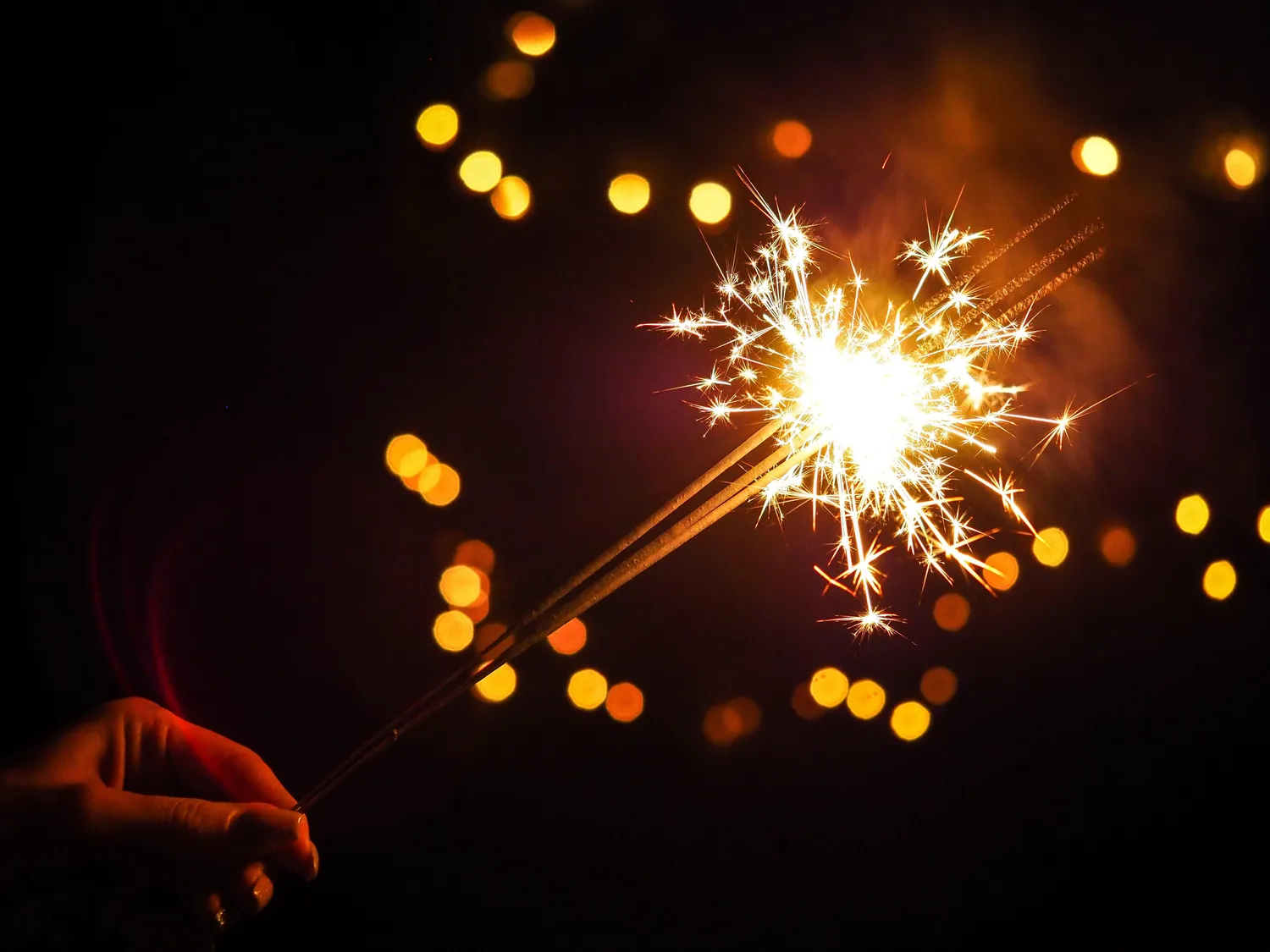
Legal Considerations for Firework Usage
The law governing fireworks can be complex, with regulations at both the federal and local levels. It's key for any fireworks user to have a comprehensive understanding of the legal laws to avoid running into issues. This section provides a beginner's guide to fireworks displays when it comes to the legal side of things.
Laws on Fireworks
In the UK, the main law regulating fireworks is the Fireworks Regulations 2004. This legislation places restrictions on who can purchase fireworks, dates and times they can be set off, requirements for safety labels, and more. Understanding the regulations of fireworks usage in the UK is imperative. The law aims to increase public safety by controlling the availability and use of fireworks across the country.
However, the law acts more as a baseline. Individual councils can implement additional local laws to further restrict activities in their specific jurisdictions. Some prohibit use entirely unless a licence is obtained. Others place limits on the dates, times, locations, or types of fireworks allowed. Violating these local laws can result in fines or other penalties.
With varied legislation between councils, it's essential to check the specific rules in your area before purchasing or setting off any fireworks. This local patchwork of laws can create confusion, especially for novices looking to hold backyard displays. Consulting your council's website for a comprehensive overview of local fireworks laws is highly recommended.
Obtaining Necessary Permits
For individuals or groups planning public fireworks displays, permits are usually required on top of adhering to the general legislation. The permit application involves submitting details about the planned event like date, location, safety protocols, insurance, and more.
Councils review these applications to ensure the display can be conducted safely and legally. If approved, the permit is issued, sometimes for a fee. Failing to obtain a permit when required can lead to serious consequences like seizures of fireworks, fines, or even jail time.
For private DIY fireworks displays, permits may not be necessary depending on the scale. However, some localities do require permits for using certain types of larger display fireworks. Check with your council to determine if any permits or licenses apply to your specific situation and planned usage.
Common Legal Pitfalls to Avoid
Some common legal mistakes amateurs make when using fireworks:
Setting off fireworks outside of designated dates/times
Using aerial fireworks or other prohibited types without a licence
Ignoring location restrictions regarding proximity to roads, buildings, wooded areas etc.
Failing to notify relevant authorities about a public display
Purchasing from unlicensed sellers instead of legitimate retailers
Penalties for violations range from fines to jail time in severe cases resulting in injuries or property damage. It's critical to understand and abide by all applicable fireworks laws and regulations in your jurisdiction. When in doubt, reach out to your local council for guidance on legal usage. Being informed is key to safely and responsibly enjoying fireworks within the law.
Choosing Safe Fireworks for Home Use
When selecting fireworks for backyard displays, focus on firework safety by choosing products designed for consumer use. Avoid anything labelled as "professional grade" or "theatrical." Understanding different types of fireworks on the market is key.
Understanding Firework Labels and Safety Ratings
In the UK, all fireworks must be tested and certified to meet British Standards. Look for fireworks marked BS 7114. This means they have passed the required safety tests. The CE mark also indicates conformity with EU regulations.
On labels, you'll see package weight limits, fuse burn times, launch heights and effects described. Larger maximum heights like 200m+ indicate a more powerful aerial display firework. For backyard use, aim for lower heights like 10-50m.
Also, look for warnings like "for outdoor use only" and "light at arm's length." Read instructions carefully before use. Only buy well-labeled fireworks from reputable sellers.
Where to Buy Safe Fireworks
As a respected retailer, we sell consumer fireworks intended for backyard use that adheres to UK safety standards. This means you can shop with confidence at Chorlton Fireworks.
Avoid purchasing professional-grade or homemade fireworks which lack quality and safety controls. Also, be wary of resellers who may not store or handle fireworks properly. For assured safety, trusted sellers are best.
Red Flags to Avoid When Choosing Fireworks
Some warning signs a firework is unsafe:
No BS 7114 safety rating or CE mark
Instructions in a foreign language only
Damage like tears or leaks
Fuses that seem overly short or long
No warning labels about usage
DIY fireworks carry greater risk, as homemade concoctions lack safety testing and quality assurance. For beginners especially, it's wise to avoid these red flags and purchase fireworks made for backyard use from licensed sellers.
Types of Fireworks and Their Safety Levels
When planning a backyard fireworks display, it's crucial to understand the different categories of fireworks and their respective safety profiles. Selecting fireworks that align with your skill level and location is key for fireworks safety.
Consumer vs. Professional Fireworks
The most important distinction is between consumer and professional fireworks. Consumer fireworks, sold legally to the public in the UK, include things like low-level fountains, Catherine wheels, sparklers, and other modest displays.
Professional fireworks are much more powerful and dangerous. They require special licenses and training to use safely. Stick to mainstream consumer fireworks from reputable retailers like Chorlton Fireworks for backyard displays. Leave professional-grade pyrotechnics to the experts.
Firework Categories and Effects
Some common categories of consumer fireworks and their effects:
Fountains - Ground-based effects like showers of coloured sparks
Catherine Wheels - Pinwheels that create swirling patterns
Rockets - Launch into aerial bursts of colour and light
Roman Candles - Tubes that shoot a series of aerial effects
Sparklers - Handheld fireworks that burn slowly and sparkle
When buying, read descriptions carefully to envision the visual and auditory effects. This will help plan your ideal backyard show. Also, confirm size and power levels are suitable for consumer use.
Safety Ratings of Fireworks
While all legally sold consumer fireworks in the UK meet baseline safety standards, some feature additional ratings:
Category F1 - Lowest hazard and noise levels
Category F2 - Slightly higher hazard, medium noise
Category F3 - More dangerous, should be handled with caution
For amateurs and residential areas, F1 fireworks are recommended. F3 fireworks can be risky without professional training. Consulting an expert seller like Chorlton Fireworks will ensure you get appropriately safe fireworks for backyard use. It is important to understand the impact of fireworks and noise pollution in your local area. Chorlton Fireworks offer low-noise fireworks for those who want to explore a quieter fireworks option.
Pre-Event Safety Measures
Proper safety planning and preparation should happen long before the fireworks are lit. Rushing into a display without forethought risks problems. Follow these pre-event guidelines for optimal fireworks safety.
Safety Planning and Risk Assessment
The first step is thorough planning and risk assessment. Evaluate the planned site for potential hazards or risks to property and people. Identify any nearby roads, buildings, trees, power lines or other structures.
Consider if high-risk individuals like small children or pets will be present. Strike a balance between enjoying the fireworks and ensuring the well-being of your pets, to ensure comfort and safety during firework displays. Check weather forecasts for wind and rain which could impact safety. Also, assess emergency access to the site in case of injuries.
Using these factors, determine if another location would be safer or if extra precautions are needed. Document your safety plan and share it with all attendees. A little pre-planning prevents problems.
Preparing the Firework Site
Once you've selected the site, physically prepare the area:
Clear away dry grass, leaves, and debris
Set up safety barriers around the launch area
Cover nearby structures with protective tarps or foam
Have multiple fire extinguishers on hand
Designate a safety zone for viewers away from the ignition point
Also prepare an emergency first aid kit, water buckets, hoses, and fire tools like rakes or shovels.
Make every effort to mitigate risks identified in your planning and risk assessment.
Weather Considerations
Ideally, weather conditions should be calm and dry:
Low wind speeds
No rain or storms
Moderate temperatures
Wind can misdirect aerial fireworks. Rain and moisture can impact ignition. Extreme heat or cold impairs safety.
If unfavourable conditions arise, postpone the event. It's never worth compromising safety for the show to go on. Consult weather forecasts frequently as the date approaches to stay informed.
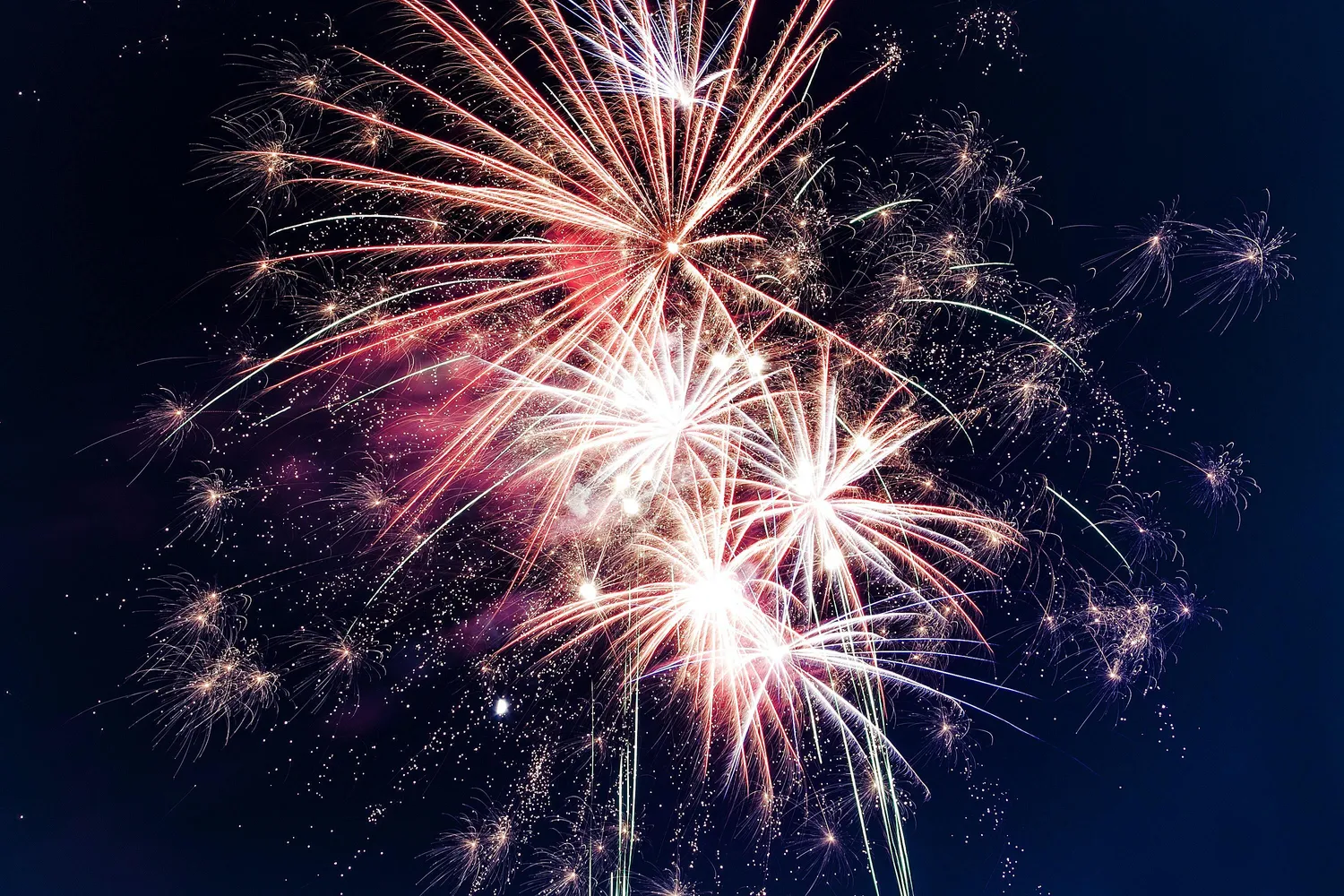
Setting Up a Home Firework Display
Careful setup is crucial for an enjoyable backyard fireworks show. From choosing the right location to safety checks, proper preparation prevents problems.
Follow this comprehensive guide to organising a backyard firework display safely.
Choosing the Right Location
Select a large open space away from buildings, trees, power lines and other structures. The recommended clearance distance is at least 8 meters on all sides for consumer fireworks.
Avoid placing fireworks near anything flammable like dry grass or woodpiles. The location should have good ventilation and airflow. Also, ensure the ground is flat and stable.
Pick a site that allows for a safe viewing zone at least 15 meters away from the ignition area. Make sure access to emergency vehicles is unobstructed if needed.
If no optimal outdoor location exists on your property, reconsider doing fireworks. Safety should drive the site selection process.
Layout and Arrangement of Fireworks
Strategically arrange the fireworks to maximize the visual spectacle:
Place the tallest aerial fireworks toward the back and centre
Group lower ground-level effects toward the front
Face fountains and cones outward for a surround effect
Angle fireworks slightly away from the audience
Leave adequate spacing for firing lines and personnel
Follow instructions to determine safe distances between fireworks. A well-planned arrangement creates a captivating show.
Safety Checks Before the Display
Before starting, inspect the site and take these precautions:
Reconfirm clearance distances from structures and viewers
Have multiple fire extinguishers at the ready
Ensure water buckets and hoses are accessible
Verify first aid kits are stocked and accessible
Check for issues like power lines, animals, or unauthorized people
Review the emergency and evacuation plan with all operators
It's also wise to do a test ignition of a single firework before the main show. Confirm no unintended fire hazards exist.
Essential Safety Equipment and Precautions
When handling explosive fireworks, especially in an amateur home setting, having the proper safety gear, equipment and emergency precautions in place is crucial. Don't take shortcuts when it comes to adequately protecting people, property and surroundings during a backyard fireworks display.
Personal Protective Equipment (PPE)
All personnel who will be actively involved in setting up and igniting the fireworks should wear fire-resistant clothing to protect against errant sparks and heat. Natural fibres like cotton and wool are recommended, as they don't melt or cling to skin like synthetic fabrics if ignited. Avoiding flammable fabrics like polyester is wise.
Wearing enclosed shoes like sneakers or work boots is also important to prevent foot injuries from hot debris on the ground. Sandals, flip-flops or other open-toed shoes offer no protection for the feet and should not be worn.
For the eyes and face, protective glasses or goggles should be worn to prevent blindness or eye damage from drifting embers or ash. Some opt for full-face shields for even greater protection. This is recommended for igniters who are in closest proximity throughout the show.
Those igniting the fireworks should wear gloves thick enough to resist heat and prevent burns to the hands. Leather welding gloves or similar heat-resistant gloves allow for dexterity while also protecting the hands.
All clothing should fit relatively snugly, avoiding excessively baggy shirts or pants that could catch sparks or brush against the fireworks during handling. Long sleeves and pants that fully cover the limbs are ideal. The less exposed skin, the better.
It's also wise for viewers observing the show to wear protective eyeglasses and clothing in case any errant sparks drift into the spectator area. Protecting your personal body should be a priority when dealing with explosive and flaming materials. Don't take shortcuts on proper fireworks PPE.
Takeaway. Those handling the fireworks should wear:
Fire-resistant clothing like cotton or wool
Eye protection like safety glasses
Heat-resistant gloves for handling fireworks
Closed-toe shoes (no sandals or flip-flops)
Long sleeves and pants to protect the skin
Fire Safety Tools
In addition to personal protective gear, having fire suppression tools and equipment readily available at both the launch site and viewing areas is a critical safety precaution.
Multiple fully-charged fire extinguishers should be on hand and easily accessible. Large ABC dry chemical extinguishers are generally recommended, as they can extinguish the various types of fires that could result from fireworks. They should be recently inspected and validated as functional.
Along with extinguishers, large buckets of water should be on hand for dousing flames or embers. These can be used for hand-thrown suppression or to replenish water-based extinguishers if needed. The water buckets should be placed around the launch and viewing zones for quick access.
Fire blankets made of fire retardant materials can also be useful for smothering small fires before they grow. These are lighter and easier to deploy than extinguishers for individual sparks or flames.
Beyond these items, other firefighting tools like shovels, rakes, and hoes allow you to manually contain fires by moving and separating burning materials. Having a few on hand near the launch area can make a big difference if any ground vegetation is ignited.
Take the time to properly position all suppression tools and equipment around both the launch and spectator areas before starting the show. They do no good sitting in a garage or shed. Verifying easy access to them is a prudent precaution.
Takeaway. Have these items readily available:
Multiple fully-charged fire extinguishers
Large buckets of water for dousing flames or embers
Fire blankets to smother small fires
Shovels, rakes and other firefighting tools
Emergency Contact Numbers
In addition to preventative tools and PPE, having emergency contact information readily available is an essential safety step when undertaking a home fireworks display.
Program the numbers for emergency services, the closest hospital's A&E department, the local fire department's non-emergency line, and the police non-emergency number into your mobile. This allows you to call for professional help quickly if any mishap occurs that requires emergency assistance. Also, have the poison control centre number saved for guidance on any potential ingestion incidents.
Provide copies of these key contact numbers to all assistants or operators involved in the show. Keep phones with the contacts handy at both the launch and spectator zones. Unlock them so contacts can be called immediately if needed, without fumbling for passcodes.
Having the ability to swiftly reach emergency responders and medical assistance could prove vital in a serious fireworks accident where seconds count. Don't wait until an emergency to look up critical contact information. Make those numbers easily accessible ahead of time.
Takeaway. Save these numbers in your phone:
Emergency services
Closest hospital/A&E
Fire department non-emergency line
Police non-emergency line
Poison control
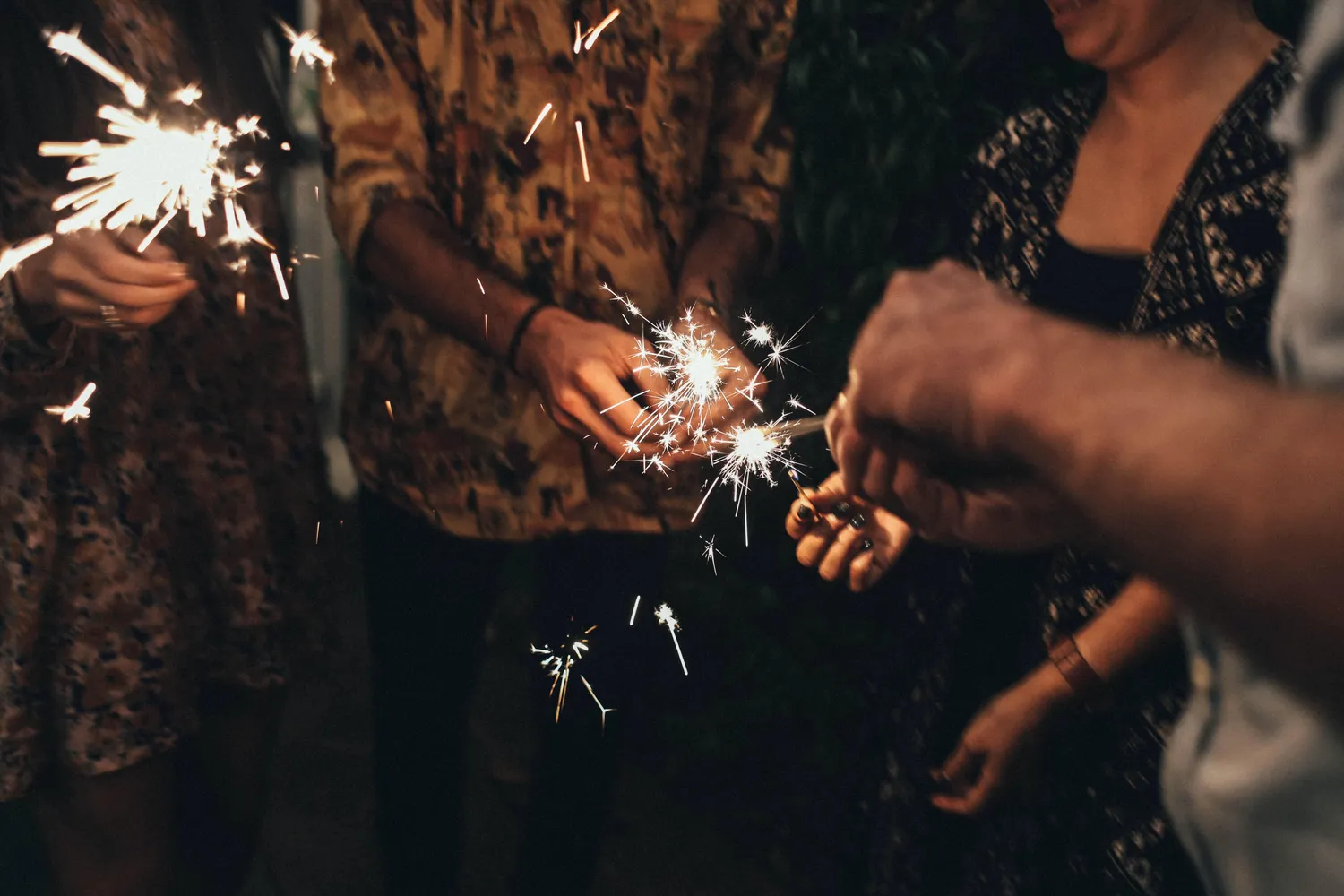
Safe Ignition Methods for Fireworks
When the big night arrives, the safe ignition of fireworks is critical. Carefully following ignition procedures prevents injuries and problems. Take the time to correctly light displays.
Safety Checks Before Ignition
Before lighting any fireworks, verify:
No people or animals are in the fallout zone
Safety barriers and perimeter are still intact
Fire suppression tools are in position
Viewers are a safe distance away
Weather conditions haven't deteriorated
Also, confirm there are no signs of defects with individual fireworks. Visually inspect each one before use.
The Correct Way to Light Fireworks
Follow these steps for safely lighting fireworks:
Have a flashlight on hand to see fuses in the dark
Light at arm's length using a punk, slow-burning fuse, or lighter
Once lit, quickly move away to a safe distance
If a fuse goes out, wait at least 5 minutes before relighting
Never lean over fireworks to inspect them after lighting
Aim aerial fireworks slightly away from spectators just in case. Never light devices in your hands or reposition fireworks after ignition. Give each firework sufficient clearance.
What to Do if a Firework Doesn't Ignite
If a firework fails to ignite, follow this protocol:
Wait at least 30 minutes before approaching
Do not try to re-light the malfunctioning firework
Carefully soak the device in a bucket of water
Place the faulty firework in a metal bucket for disposal
The worst thing you can do is try to relight a faulty firework that could still explode. Also never bury or throw away malfunctioning fireworks in regular rubbish. Handle them very carefully.
Safety During the Firework Display
Simply preparing for the show isn't enough. To ensure safety, certain precautions must be maintained throughout the display until the finale. Diligently monitoring conditions and responding appropriately is key.
Maintaining Safe Distances
Spectators should remain the recommended minimum 15 meters away from the launch area throughout the show. This distance protects the audience from falling embers or misdirected projectiles. Children especially should remain back and be closely supervised.
Operators should also maintain a safe distance once fireworks are lit, quickly moving back before any aerial effects launch. Never lean over ignited devices. Give all fireworks a wide berth after lighting them.
The bottom line - stay far back at all times! Don't let the excitement lead to getting too close. Keep your distance.
Safety Barriers and Zones
Physical barriers around the launch area provide an extra safety buffer:
Use rope, tape, fences or other barriers to delineate the launch zone
Post highly visible signage indicating restricted access
Designate a clear spectator viewing zone away from debris fallout
Barriers help prevent unauthorized people or pets from wandering into dangerous areas mid-show. They also make safe zones clearly identifiable.
Emergency Evacuation Plans
Though rare, emergencies can happen. Have an evacuation plan in case you need to stop the show and clear the area quickly:
Designate evacuation meeting spots for operators and spectators
Identify the quickest exit routes from the launch and viewing areas
Assign some personnel to guide spectators out calmly and safely
Halt the show immediately if any fire spreads out of control
By planning ahead, evacuations can happen swiftly and safely if the need arises. Don't wait until an emergency to determine how to exit - have an orderly plan in place.
Handling Mishaps and Accidents
Despite the best precautions, fireworks mishaps can happen. Being prepared to respond appropriately can greatly reduce injury and damage. Stay calm, act quickly, and follow safety protocols.
Types of Fireworks Accidents
Common firework accidents include:
Minor burns - Cool the area, remove jewellery, and apply aloe vera
Eye injuries - Flush eyes with water, don't rub, bandage and get medical help
Hearing problems - Move away, take painkillers, and see a doctor
Fires - Extinguish small fires with water, smother sparks with a blanket
More serious injuries like deep burns, embedded particles, or finger loss may require emergency services. Use common sense to assess severity.
When to Call Emergency Services
Call 999 immediately if there are:
Severe or bloody injuries
Burns covering large areas
Damage to eyes or loss of vision
Uncontrollable fires
Loss of consciousness
Severe headaches or dizziness
Panic, shock, or trouble breathing
Don't delay - it's better to be safe and have paramedics examine the situation. Provide any first aid you safely can until help arrives.
Post-Accident Reporting and Legalities
You're legally required to report any firework accident sending someone to hospital to your local council within 14 days. Failing to do so risks fines or prosecution.
For serious incidents, the fire brigade or police may conduct investigations. You may need legal representation. Be truthful and cooperative, but seek counsel first.
Post-Event Cleanup and Firework Disposal
The event isn't truly over until the area is cleaned up and any used or unused fireworks are disposed of properly. Follow these tips for safe and environmentally responsible post-display cleanup.
Safe Disposal Methods for Used Fireworks
Never throw used fireworks in the household rubbish. Chemical residues could ignite and cause a fire. Follow these proper disposal methods:
Allow fired fireworks to fully cool and soak in water overnight
Place completely cooled fireworks in a bucket of additional water
Contact your local council about hazardous waste disposal programs
Or take unused fireworks to a licensed retailer for disposal
Be sure to check the ground for misfires and debris. Soak any unexploded powder or pieces and dispose of them properly. Leave no trace.
Environmental Considerations in Cleanup
The chemicals and metals in fireworks can contaminate soil and groundwater if not cleaned up. Minimize environmental impact by:
Picking up all debris - casings, wrappers, wires
Avoiding use near lakes, rivers, or watershed areas
Properly disposing of waste through approved channels
Using biodegradable confetti instead of metallic mylar
Fireworks and the environment don't have to be at odds with smart practices. Do your part to leave the area clean.
Storage of Unused Fireworks
If properly storing unused fireworks for next time, follow safety precautions:
Keep in a cool, dry place away from heat sources
Store in a sealed fire-resistant container
Never keep in a dwelling or attached garage
Limit quantity to reduce risk of accidental ignition
Check local laws for any storage restrictions
With safe handling, unused fireworks can be saved for future supervised displays.
Fireworks are awe-inspiring spectacles that create lasting memories when enjoyed safely. By selecting consumer-grade fireworks suited for home use and following safety guidelines, you can minimize risks.
Thorough pre-planning and preparation are key, from securing permits to readying emergency response protocols. During the show, vigilantly maintaining safe distances and zones protects spectators. Handling any accidents appropriately also ensures outcomes aren't worsened. Finally, cleaning up debris and disposing of used fireworks properly reduces environmental impact.
With reasonable precautions in place, fireworks can deliver dazzling delights to behold. Fireworks add a touch of magic to celebrations and together we can enjoy fireworks responsibly while safeguarding the environment’s air quality for future generations.
By understanding the regulations, purchasing from reputable retailers like Chorlton Fireworks, and making safety the top priority, your backyard fireworks show can create magical memories without unwanted mishaps.
350 Barlow Moor Rd
Chorlton
Manchester, M21 8AZ
07810 222123
info@chorltonfireworks.com
